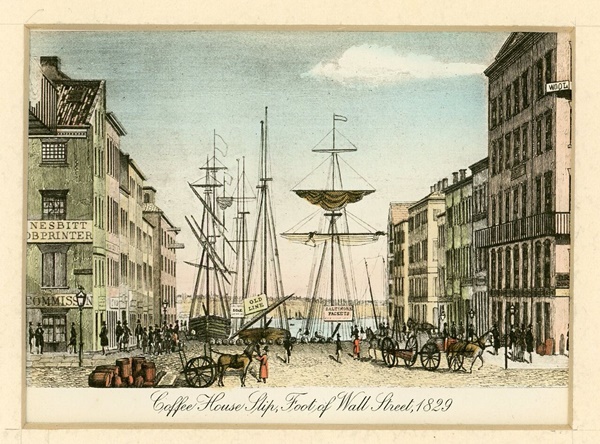
George F. Nesbitt & Co. Clipper Storm King (circa 1864)
Image: Courtesy of South Street Seaport Museum Archives
The South Street Seaport Museum in Lower Manhattan will host one of its first exhibits since 2012, when Hurricane Sandy washed in and ravaged the space. The storm damaged the building’s electrical system, knocking out elevators and escalators, as well as its heating, electrical and air conditioning systems. In addition to losing its computer system in the storm, the corrosive floodwaters also reportedly left a film of oily residue along the floor and walls.
More than three years later, the museum is preparing for its first show since the storm, titled “Street of Ships: The Port and Its People,” which is scheduled to open March 17. It draws on the museum’s permanent collection to explore and celebrate New York’s development into a major shipping port during the 19th century.
During this time, New York grew into a major commerce hub due to linking Europe, Asia, the Caribbean, and South America. By around 1860, the city’s population was nearing 1 million. South Street became known as “the Street of Ships,” with dense clusters of ship masts visible from the Battery to the Brooklyn Bridge.
“This was the heyday of the Seaport, the original port of New York,” the museum’s executive director, Captain Jonathan Boulware, told artnet News via email. “This period had a profound and direct impact on the New York we know today,” he added.
A focal point of the exhibition is the history and current restoration of the 1885 cargo ship, “Wavertree,” an archetype of the ships that frequented the port. Wavertree is currently undergoing a 15-month city-funded restoration and will return to the South Street Seaport this summer.
Wavertree in Port Stanley, Falkland Islands (1910-11)
Image: Courtesy of South Street Seaport Museum Archives
“In the three years since Hurricane Sandy, much has been done to move this important New York institution forward,” said Boulware. “But nowhere is that work more evident than in the $13 million restoration of our flagship Wavertree. It’s a project unlike any undertaken in a generation.”
Wavertree was built in Southampton, England and circled the globe several times carrying a wide range of cargo materials. In 1910, after 25 years in action, it was caught in a storm in Cape Horn that devastated the masts and effectively put it out of commission as a cargo ship. It was then used as a storage barge in South America before being acquired by the museum in 1968 and moored at the Seaport ever since. Though it was not damaged during Sandy, thanks to preparation by museum volunteers, it nonetheless needed extensive restoration.
Currently that rebuilding is being carried out at Caddell Drydock and Repair in Staten Island. The restoration includes a new “tweendeck,” which, despite sounding like a new iPhone app, is actually the deck between the cargo holds and the main deck. The repair further includes replacing 16 wooden masts and adding new rigging that will allow sails to be set. The ship will be returned to the adjoining Seaport dock this summer. Objects and video related to the restoration will be part of the upcoming exhibit.
H. Fossette Coffee House Slip (circa 1850)
Seaman’s Bank for Saving Collection
Image: Courtesy of the South Street Seaport Museum.
Even before 2012, the museum had been plagued by financial difficulties. It had opened just 10 months before the storm following a year of renovations. The museum received $10.4 million in support from the Federal Emergency Management Association, and $1.2 million from the State of New York, but is still raising money.
Boulware told artnet News via email: “After the double blows of 9/11 and hurricane Sandy, the Seaport Museum is rebuilding toward it’s optimal size, an organization of $6.5 million annual budget.” He continues, “A key ongoing funding need is the preservation and programmatic activation of the fleet of historic ships, an essential and iconic presence on the East River. “